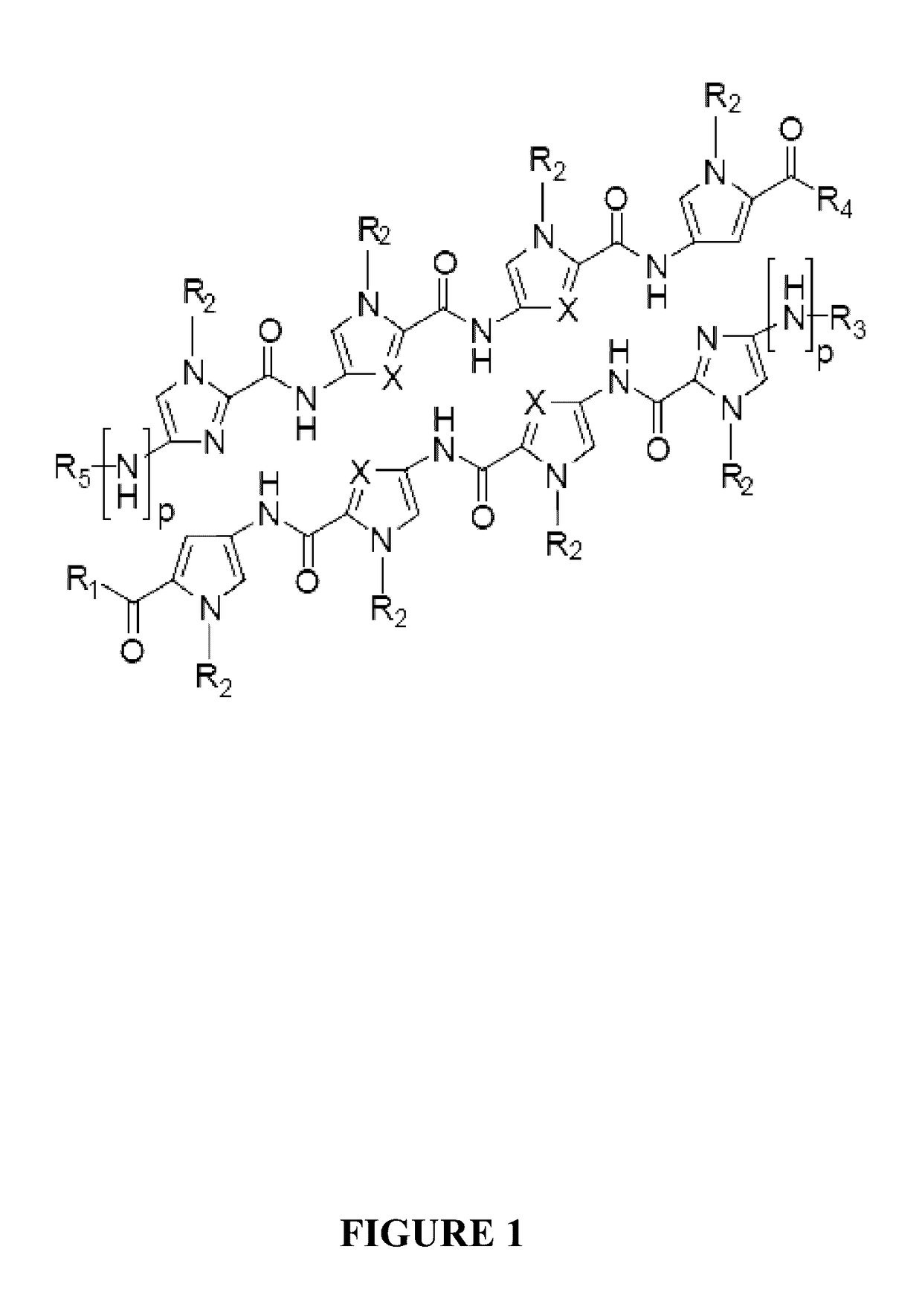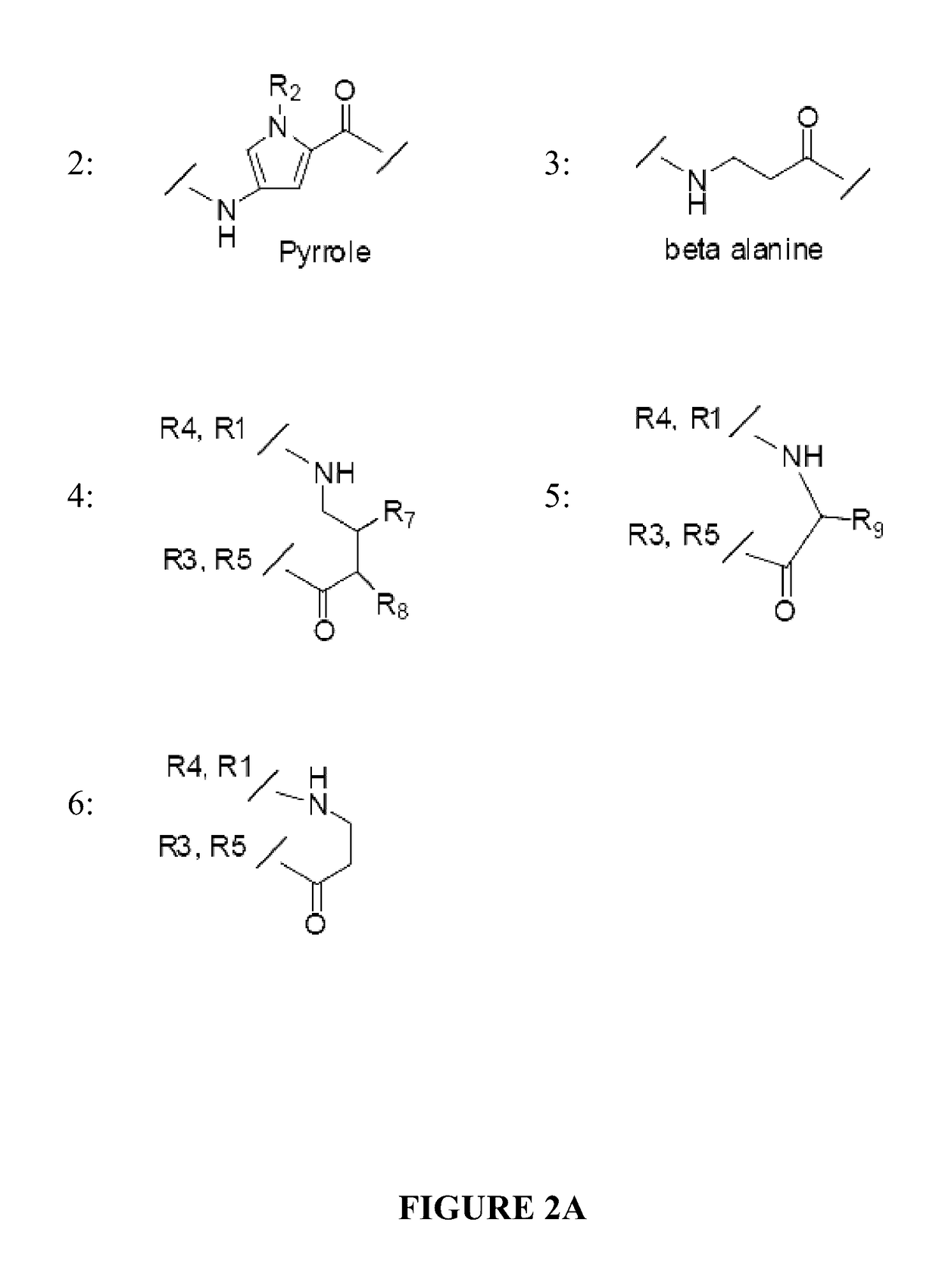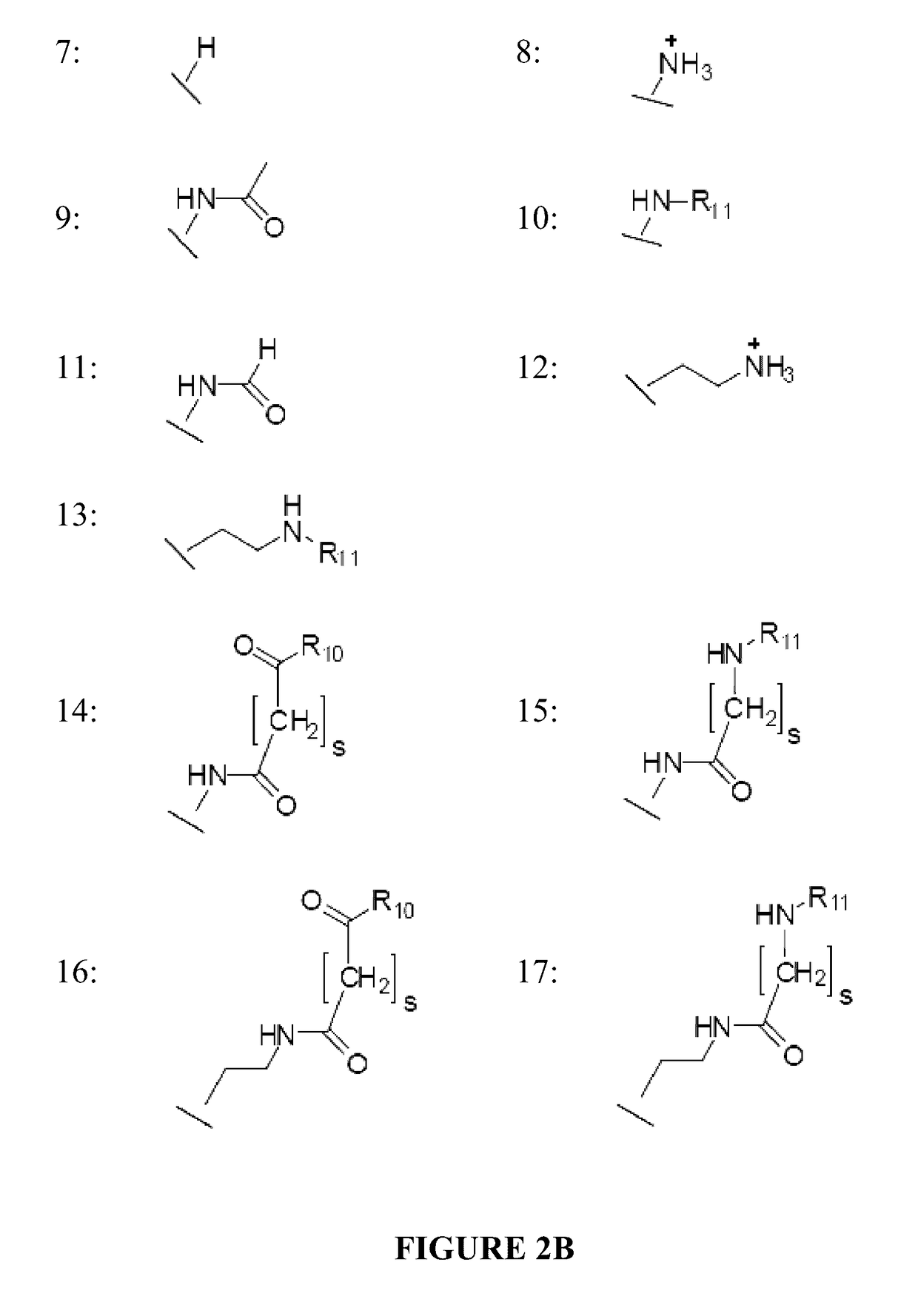Inhibitors for steroid response elements and RNA polymerase II and related methods
a technology of steroid response elements and inhibitors, applied in the direction of organic active ingredients, pharmaceutical active ingredients, organic chemistry, etc., can solve the problems of slow prostate cancer growth, unable to detect steroid response elements,
- Summary
- Abstract
- Description
- Claims
- Application Information
AI Technical Summary
Benefits of technology
Problems solved by technology
Method used
Image
Examples
example 1
1.1 Abstract
[0109]Androgen receptor (AR) is essential for the growth and progression of prostate cancer in both hormone-sensitive and hormone-refractory disease. A DNA-binding polyamide that targets the consensus androgen response element binds the prostate-specific antigen (PSA) promoter androgen response element, inhibits androgen-induced expression of PSA and several other AR-regulated genes in cultured prostate cancer cells, and reduces AR occupancy at the PSA promoter and enhancer. Down-regulation of PSA by this polyamide was comparable to that produced by the synthetic antiandrogen bicalutamide (Casodex) at the same concentration. Genome-wide expression analysis reveals that a similar number of transcripts are affected by treatment with the polyamide and with bicalutamide. Direct inhibition of the AR-DNA interface by sequence-specific DNA binding small molecules could offer an alternative approach to antagonizing AR activity.
[0110]Abbreviations: AR, androgen receptor; ARE, and...
example 2
2.1 Abstract
[0153]Glucocorticoid receptor (GR) regulates expression of genes involved in many biological processes including inflammation. A DNA-binding polyamide that targets the consensus glucocorticoid response element binds the glucocorticoid-induced leucine zipper glucocorticoid response element (GRE), inhibits dexamethasone-induced expression of GILZ in cultured lung cancer cells, and reduces GR occupancy at the GILZ enhancer. Direct inhibition of the GR-DNA interface by sequence-specific DNA binding small molecules could offer an alternative approach to modulating GR activity.
[0154]Abbreviations: GR, glucocorticoid receptor; GRE, glucocorticoid response element; GILZ, glucocorticoid induced leucine zipper.
2.2 Introduction
[0155]Because polyamide 1, which is expected to bind to most AREs, inhibited the expression of DHT-induced AR regulated genes in LNCaP cells, it was hypothesized that the polyamide 1 might also inhibit the expression of dexamethasone-induced GR regulated gene...
example 3
3.1 Overview
[0172]It is possible to inhibit the protein-DNA interactions AR-ARE and GR-GRE using polyamides targeted to sequences found in the consensus ARE and GRE. A cell permeable polyamide targeted to these sequences that can access chromatin in cells, bind target sequences, and prevent or displace the binding of the AR or GR, was able to affect the expression of genes regulated by AR or GR.
[0173]Because the DNA binding domains of androgen receptor, glucocorticoid receptor, and estrogen receptor are similar in structure, it is here hypothesized that a polyamide targeted to bind at estrogen response elements, EREs, could be expected to antagonize estrogen receptor (ER) activity in cells. Two forms of ER, ER-alpha and ER-beta, exist. These receptors are also members of the ligand-activated nuclear receptor family of transcription factors (48). Like AR and GR, ligand binding to ER initiates release from the cytoplasm, dimerization, binding to the estrogen response elements (ERE) of...
PUM
| Property | Measurement | Unit |
|---|---|---|
| dissociation constant | aaaaa | aaaaa |
| thick | aaaaa | aaaaa |
| structure | aaaaa | aaaaa |
Abstract
Description
Claims
Application Information
 Login to View More
Login to View More - R&D
- Intellectual Property
- Life Sciences
- Materials
- Tech Scout
- Unparalleled Data Quality
- Higher Quality Content
- 60% Fewer Hallucinations
Browse by: Latest US Patents, China's latest patents, Technical Efficacy Thesaurus, Application Domain, Technology Topic, Popular Technical Reports.
© 2025 PatSnap. All rights reserved.Legal|Privacy policy|Modern Slavery Act Transparency Statement|Sitemap|About US| Contact US: help@patsnap.com



